cliff notes:
thin cuts at messy data with cross-correlated confounds can be extremely misleading
there is little to no compelling evidence of widespread vaccine failure in israel
cases adjusted for sample rate, hospitalizations, and deaths are all way down from peaks and vs this same seasonal surge a year ago. absolute levels are very low.
this is consistent with development of functional community resistance, not immunity failure or risk of a second pandemic
it’s essentially mathematically inevitable given the stratification of risk cohorts and the prevalence of vaccination toward the high risk that even with very effective vaccines most people in hospital will be vaccinated
everyone needs to take a breath here and get a holistic picture. we’re seeing attenuation of covid and of covid risk, not acceleration.
discussion:
much has been made of the israeli covid data and their vaccinated vs unvaccinated case counts, hospitalizations, etc. this is a complex set of data, measured poorly and inconsistently, and that has several variables underpinning it that cofound data and pull it in multiple directions. it’s far more resistant to drawing simple conclusions that many folks on both sides of the vaccine debate are making out and depending on which subset you look at, you can draw all manner of vastly differing conclusions.
case data, in particular, is a trainwreck.
sometimes, the most important thing we can remember is that there is no one data series that tells us the answer and that we need to take something of an evolving mosaic approach to get at the underlying fact pattern and relationships.
it’s also important to take some key fundamental salients from biology into this analysis with us so that we may check the data we’re seeing for plausibility. this will give us some hints as to when to reject data and when to reject hypotheses.
testing for covid, especially by high Ct PCR, is inherently flawed and prone to massive overstatement of clinical disease. the test is too sensitive and can easily detect non-clinical trace virus and viral remains that are neither infective nor contagious.
vaccines are not perfect. none are 100% effective.
vaccination works by training the immune system. thus, it works less well in those with weaker or ineffective immune systems. no vaccine will provide much benefit for the sufficiently immunocompromised.
natural immunity has also been building and looks to outperform vaccination in terms of resisting second infections.
risk from covid is extremely stratified. it has never posed much risk to the young and healthy. severe covid has been a disease of the old and the comorbid, especially the obese, diabetic, hypertensive, and immunocompromised.
such high risk people have the highest vaccination rates. the young and healthy are the least vaccinated. this injects massive selection bias into the data, even when one accounts for age.
“But the risk of dying from Covid-19 is extraordinarily dependent on age: it halves for each six to seven year age gap. This means that someone aged 80 who is fully vaccinated essentially takes on the risk of an unvaccinated person of around 50 – much lower, but still not nothing, and so we can expect some deaths.”
taken together this makes for a muddy picture and means that even if vaccines are 90-97% effective we’ll still likely see most deaths and hospitalizations among the vaccinated because the vaccinated represent and inherently far more vulnerable cohort of patients.
thus, it is dangerous and likely inapt to draw a “vaccines don’t work” claim from the fact that most hospitalizations are among the vaccinated. if we gave every 90 year old a lollipop and then noted that they died at far higher rates this year than others, it would hardly prove that lollipops are fatal.
we need to stratify by risk.
this takes us to the israeli data:
at first pass, this chart appears ominous. there is a clear association of higher vaccination rates and higher higher case counts. but what is this really telling us? the answer is “we cannot tell.” this data is consistent with vaccines increasing covid risk, but outside the apparent 14 day window of higher vulnerability between shots one and 2, that hypothesis does not seem to hold up. vaccine clearly showed significant efficacy post shot 2.
it is also possible that this stratification is rooted in demographics like age and risk. there is clearly a very strong correlation there. are we comparing retirement communities with an avg age of 75 to places with an age in the 30’s? i lack the demographic data to check this but it would be useful ground for inquiry.
it could also be an artifact of unequal testing levels and rates by age and risk category and big rises in testing rates can badly inflate case counts leading to the infamous “testdemic” where big rises in sample rate are mistaken for rises in prevalence and the whole slope of a pandemic is misread. that appears to be driving much of the issue in israel.
people see this case count and say “oh no, covid is rampaging! delta delta! yikes!” maybe they even add emojis… 🙀🙀☠️
but this analysis is badly incomplete and severely misleading.
reported cases are 92 per million on 7/18/21 vs 188 last year when they spiked in this same seasonal timeframe. so, right there, we’re looking at a 50% yoy drop. but the drop is actually far sharper.
here is the testing level and as can be seen, it has risen by nearly 4X since mid june. there’s your rise in case counts. it’s sample rate.
current rates of 7.34 vs 3.15 on the same day a year ago are a 133% rise in sampling.
thus, it’s really a case drop from 438 per mm (adjusted) to 92/million. that’s down 79%. so, this is a BIG drop in cases year on year. that is consistent with something stopping spread esp in light of the more contagious delta variant.
we can see clear confirmation of this in the % positivity data which, while up from nearly nothing in june is tracing the same seasonal pattern as last year but at VERY low absolute and relative levels. it’s 1.3% vs 6% last year on the same date.
so, cases, while at far lower levels than last season, are rising seasonally, but it’s not inherently clear this means anything because it’s not clear that “cases” mean anything when you’re counting asymptomatic PCR positives. this is could be just trace virus in a climate period more conducive to passing it around endemically. is anyone really sick? we cannot tell because the tests and definitions here never made much sense.
but we can track hospitalizations and deaths as this is, after all, what we’re supposed to really care about. the news there is actually quite good. patients in hospital has risen modestly but remains at low absolute levels of 17.10/mm vs 82.38 on this day last year and the 276 peak in january (down 79% and 94% respectively)
this would seem show that severe cases are way, way down. this is consistent with functional community immunity having been generated to a significant degree.
we can also look at deaths, though this will be a more lagging indicator. they have ticked up slightly, but remain at extremely low absolute levels of 0.18 per million vs 0.88 a year ago and 7.49 in january. (80% and 98% respectively) keep in mind this means 1.5 deaths per day (7 day MA) in a country of 9 million. more people are probably dying of choking on candy.
excess mortality is also below normal and dropping vs 10% above normal and rising at this time last year.
taken as a whole, this data is consistent with strong generation of functional community immunity having been generated. whether it is from vaccines, natural immunity, depletion of vulnerable cohorts, a less dangerous delta variant becoming dominant, or mostly likely a combination of the 4, these very low levels of serious outcomes and even of cases counts once adjusted for sample rate variance do not seem to indicate vaccine failure. (they do not disprove it either, but given other data, such disproof seems like a claim that would require strong support, and it’s lacking here)
they are more consistent with cohort risk variance and are just a cross correlation where the highest risk individuals have the highest vaccination rates and the lowest risk individuals are not vaccinated.
consider: if those 75-84 have 38X the hospitalization risk of those under 18 and vaccines are 90% effective at stopping hospitalization, they should still outnumber the under 18’s nearly 4:1 in hospital on a per capita basis. the fact that most folks hospitalized are vaccinated should not be a surprise. that’s a nearly unavoidable outcome given the risk stratification here and you can probably add a zero to that variance when looking at young people with no comorbidities.
percentages of patients in hospital or dying can be very misleading when there are this many cross correlated confounds and the risk pools are so wildly different. the data is, at best, murky here and acting as though we can read it like a randomized controlled trial is a poor idea.
i just do not think we can look at this data and defend the claim that vaccines are failing in israel. the overall data looks more consistent with them working, though given the rise in natural immunity and risk cohort depletion, it’s very hard to tell by how much without far more granular datasets than i have seen.
we’d really need to look at risk matched cohorts in vaxxed an unvaxxed and weed out those who have already generated natural immunity especially as having done so might make one far less interested in getting vaccinated and the cross confound could be significant.
so let’s all take a breath here and not jump to conclusions based on thin cuts at confusing data.
i suspect the likely scenario is this:
vaccines do work, but not at the 97-99% levels claimed.
they do a good job of stopping clinical covid, but noting can stop trace virus picked up by high Ct PCR. this makes “cases” a lousy metric to judge vax efficacy.
hospitalization and deaths are way down in most places.
serious cases are way down
we’ll see seasonal surges, esp in “cases” but this will be more casedemic than pandemic 2.0. it will rise through august then drop, similar to last year and in the US will focus in southern states, just like last year.
looked at in context, this is showing the signs of attenuation, not acceleration
bellowing for lockdowns, masks, vaccine mandates and vaccine passports is low politics, not high science.
it always was.
it has undermined public health and public confidence.
don’t respond in kind. careless data use is not the cure for data misrepresentation. that’s not where the high ground lies. just because they want to play fast and lose with facts and data is no reason that we should.
someone needs to be the actual “side of science” here. let’s make it us.




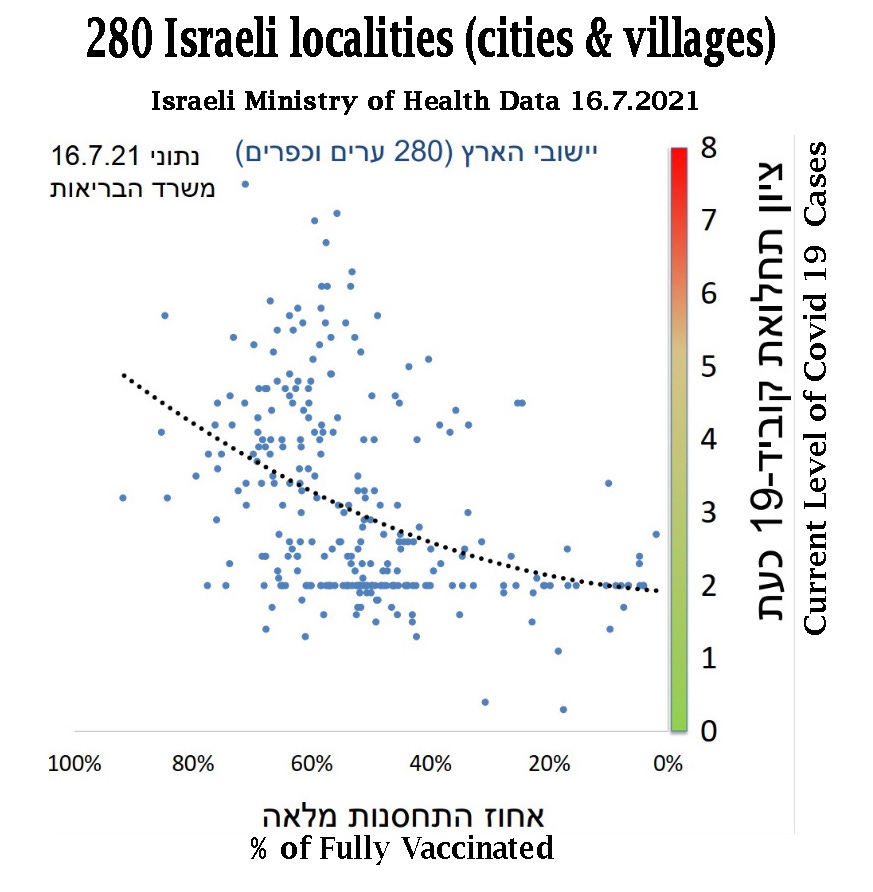
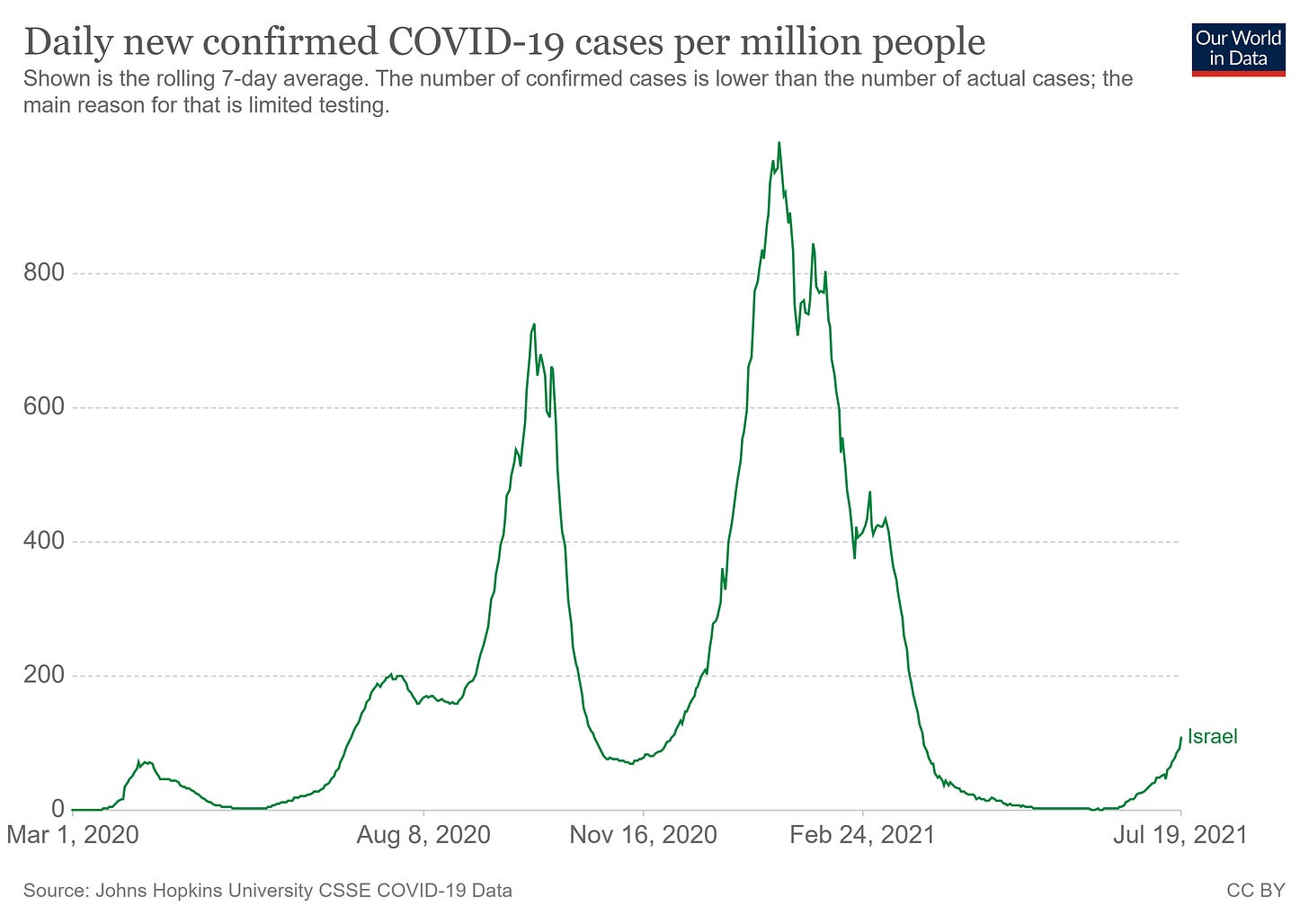
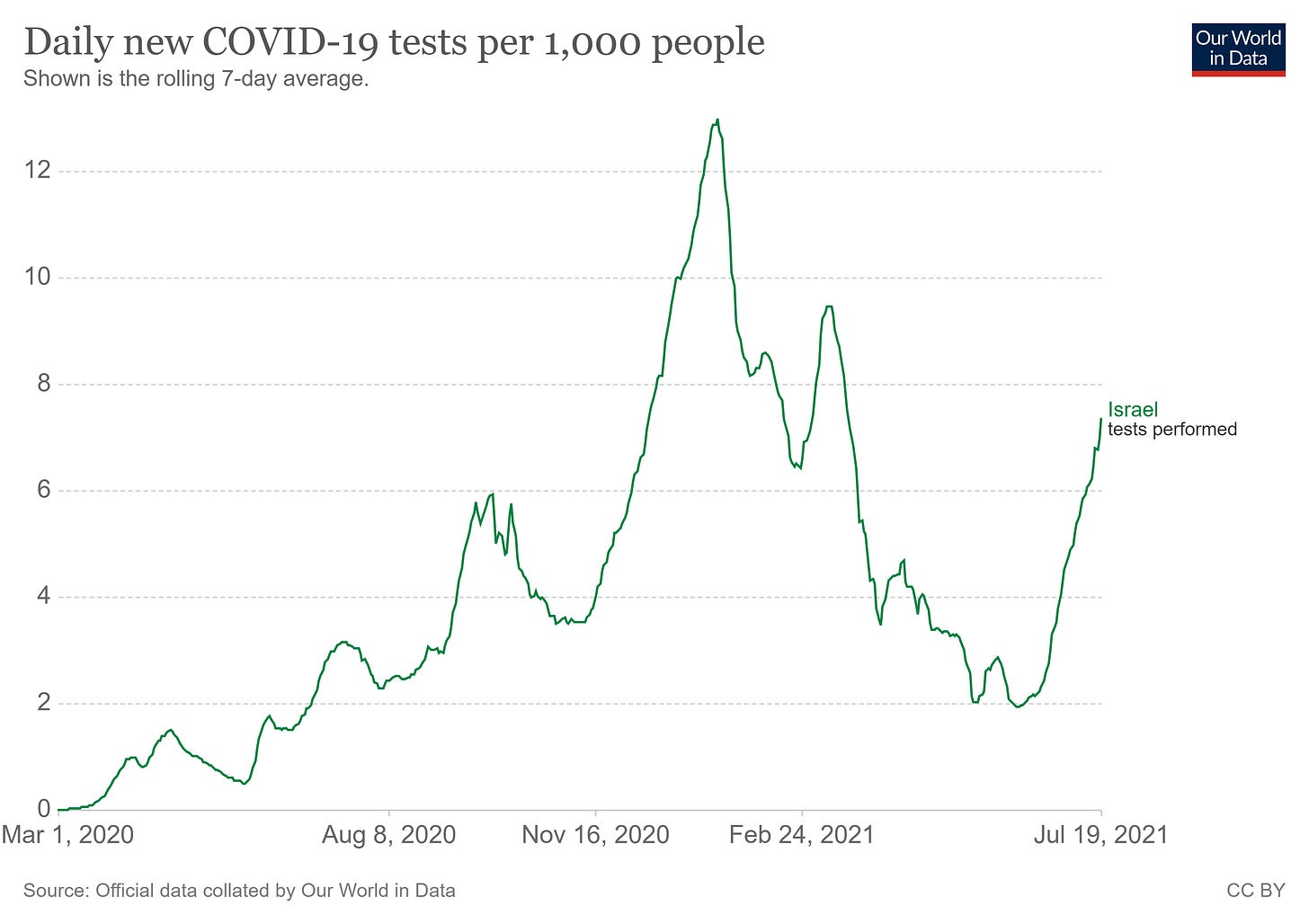
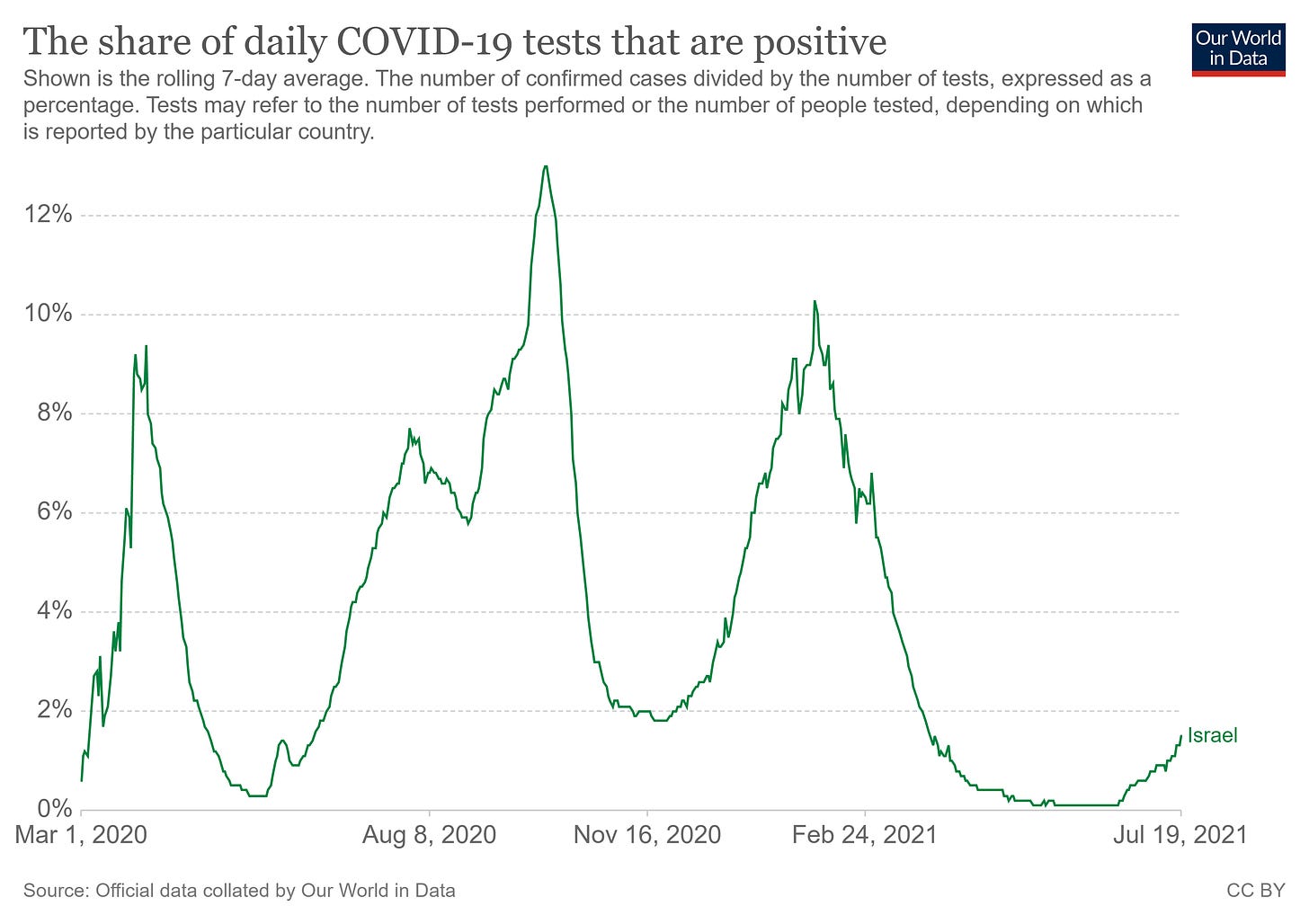
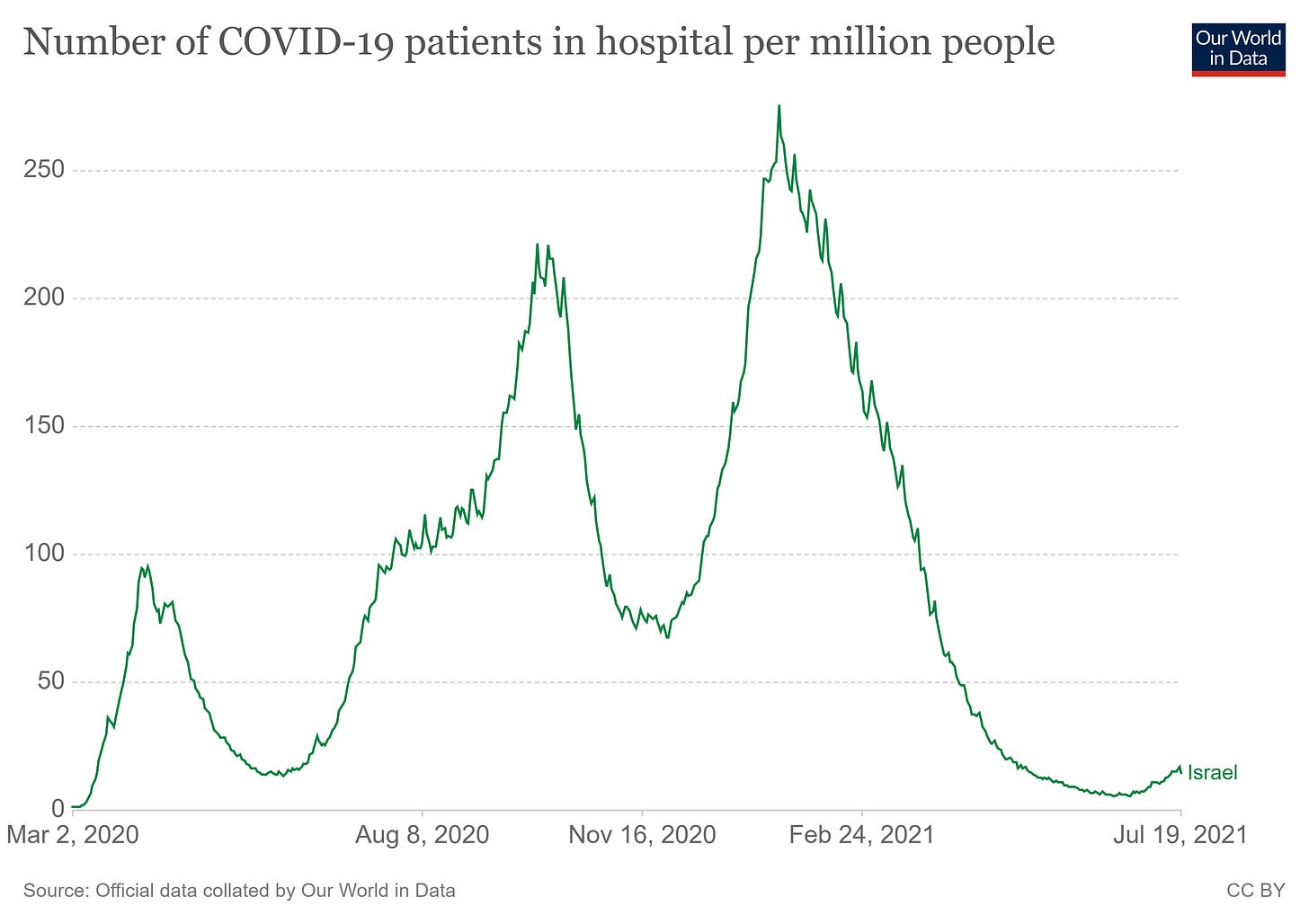
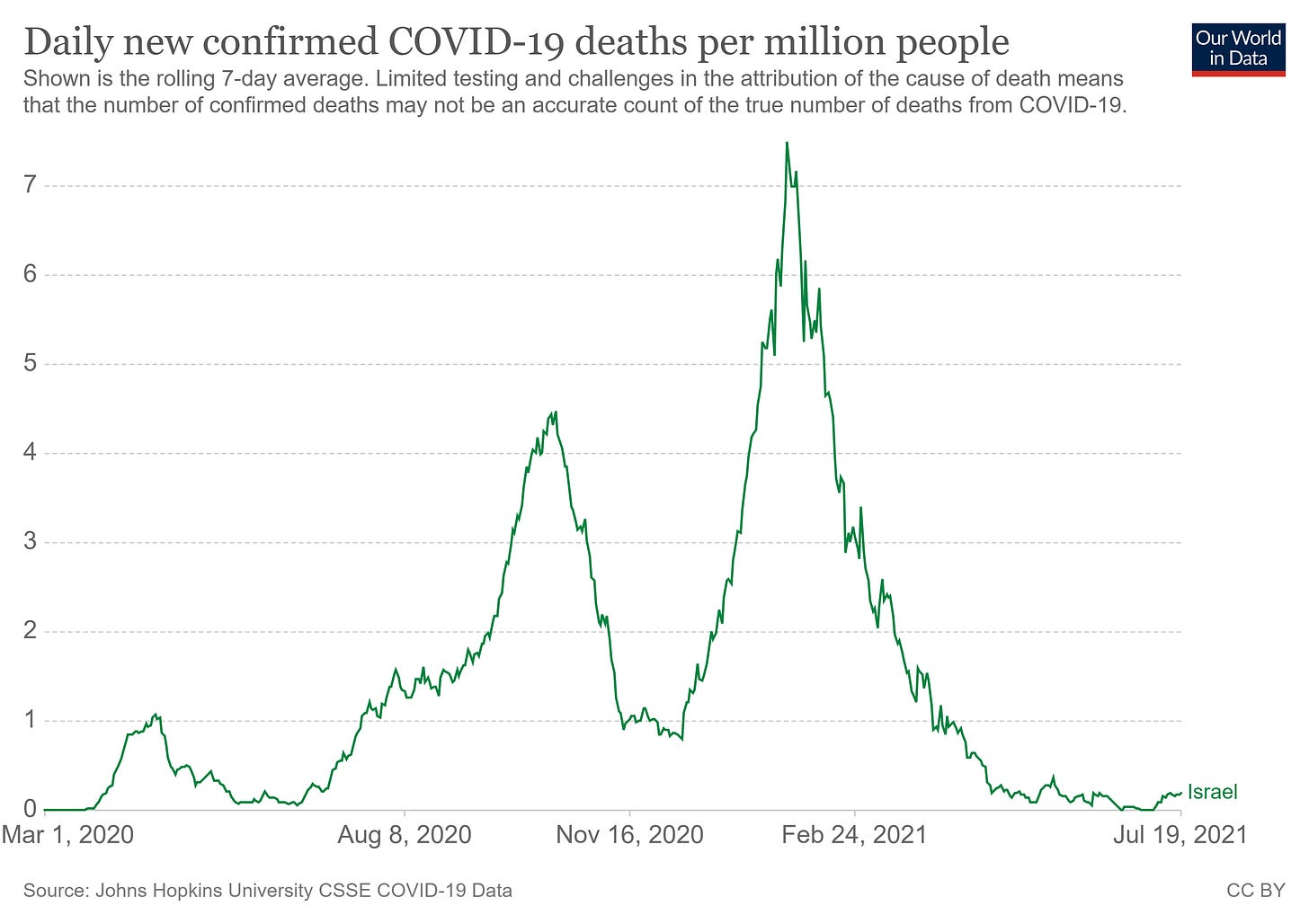
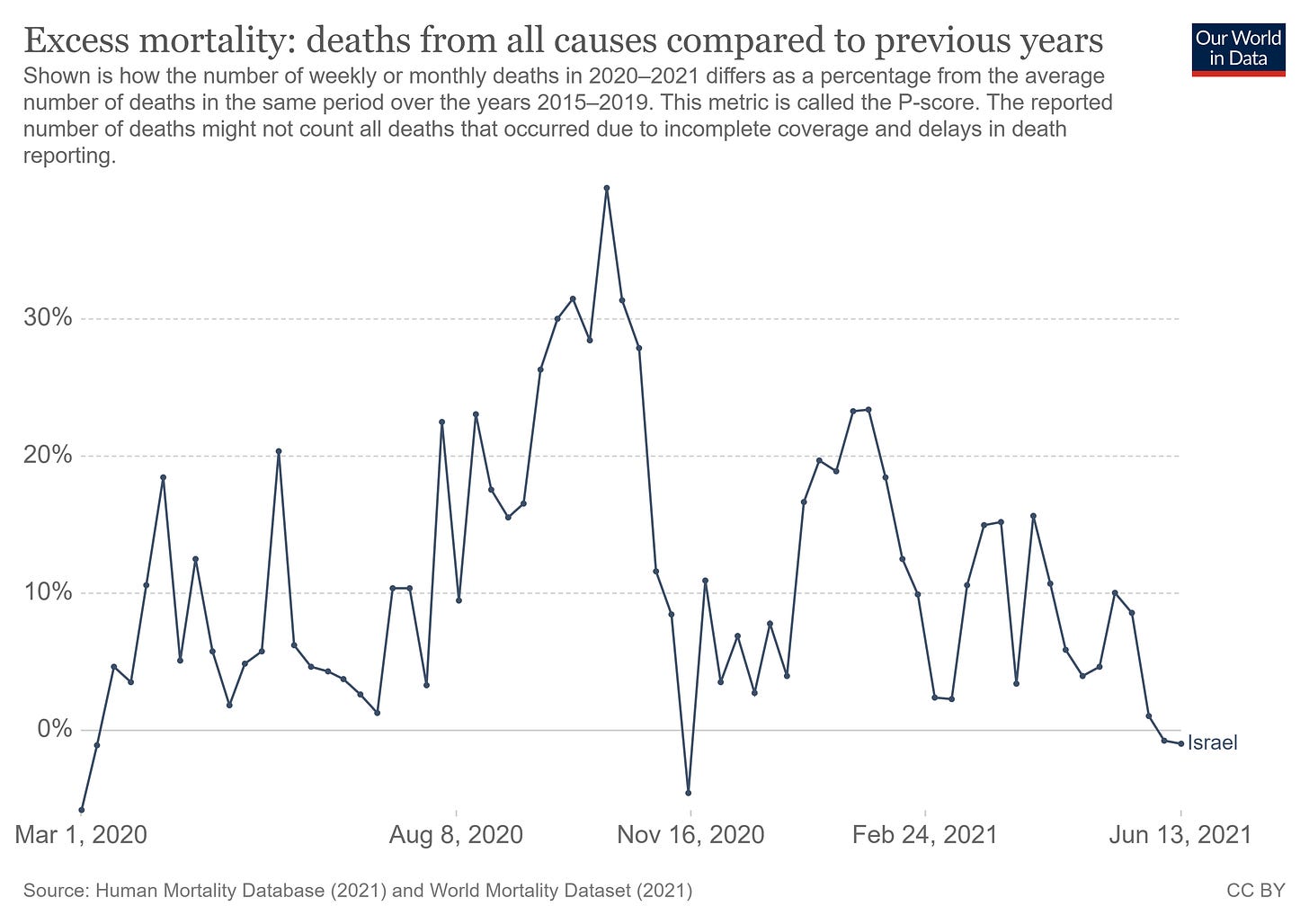



Thank you for this analysis Gato. I think the issue here is that the general public has the prevailing mindset that the vaccines are supposed to prevent people from becoming infected, experiencing moderate symptoms, and spreading the virus to others. I think people are finally starting to realize this is not the case...but rather than admit the vaccines aren't as useful as they were told, they are doubling down and blaming the unvaccinated for spreading the virus around to those who are vaccinated.
I think it's pretty obvious that this is not true. Based on the numbers we are seeing with this most recent rise in positive tests among symptomatic vaccinated individuals, it's becoming more clear that these vaccines do not prevent infection or contagion across the general population. I agree with your analysis that in the more vulnerable, and older cohorts, they seem to be showing effectiveness. However, I just don't see much benefit here across the generally healthy population. The recent data showing significant outperformance in natural immunity vs the vaccine makes it abundantly clear that the vaccines are mostly worthless in the healthy cohort.
Fair analysis. People tend to miss that the first rule is to make sure your compared populations are actually comparable. This also BTW strongly contradicts the claims, unsupported by any data but just by media trumpeting of Fauci and CDC, that 99.xx% of deaths are in the unvaccinated. Highly implausible.